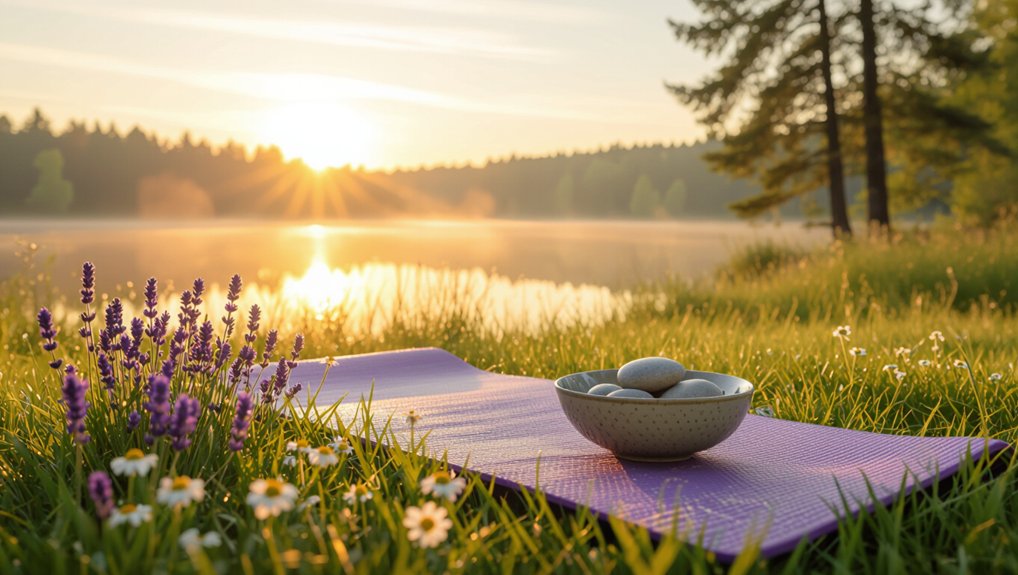On June 2, you’ll explore mindfulness meditation, a practice that centers on being fully present. You’ll learn techniques that help you focus on your breath and sensations, enhancing self-awareness. This introduction will reveal how mindfulness can significantly impact your mental and physical well-being. As you consider these benefits, you might wonder how to incorporate mindfulness into your daily routine. The journey to calm and clarity starts here.
What Is Mindfulness Meditation?
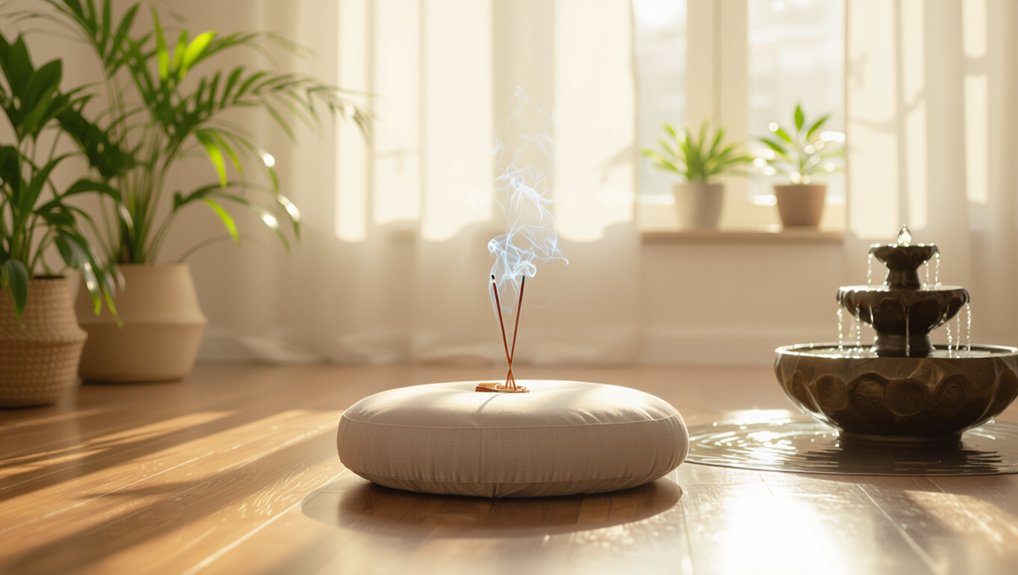
Mindfulness meditation is a practice that helps you focus on the present moment, allowing thoughts and feelings to pass without judgment. It encourages you to observe your breath, sensations, and surroundings, pulling your attention away from distractions.
By practicing mindfulness, you become more aware of your thoughts and emotions, which can lead to a greater understanding of yourself. You’ll learn to respond to stress and anxiety more effectively, rather than react impulsively. This practice fosters a sense of calm and clarity, improving your overall well-being.
You don’t need any special equipment or a quiet space; just find a comfortable position, close your eyes, and start paying attention. With regular practice, you’ll notice positive changes in your daily life.
The History of Mindfulness Practices
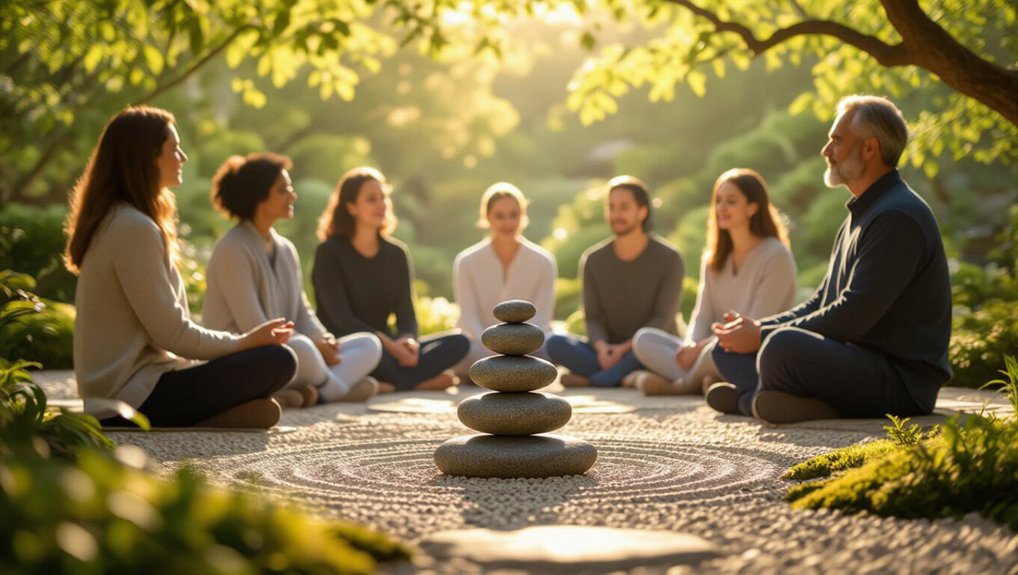
Rooted in ancient traditions, mindfulness practices trace back over 2,500 years to Buddhist meditation techniques. You’ll find that these practices emphasize awareness, presence, and acceptance.
Initially, mindfulness was part of the broader path to enlightenment in Buddhism, focusing on cultivating a deeper connection to one’s thoughts and feelings. Over time, these techniques spread beyond religious contexts, influencing various cultures and philosophies.
In the late 20th century, mindfulness gained popularity in the West, largely due to figures like Jon Kabat-Zinn, who adapted traditional practices for a secular audience.
Today, you can see mindfulness integrated into various fields, including healthcare, education, and business, showcasing its versatility and relevance in modern life. Understanding this history enriches your practice and appreciation of mindfulness.
Benefits for Mental Health
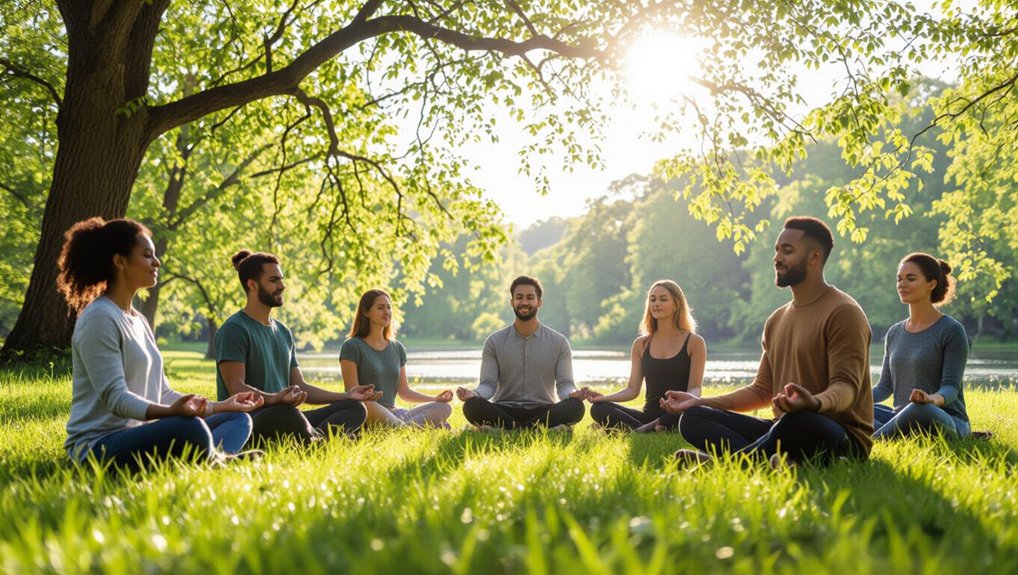
While many people seek out mindfulness meditation for its calming effects, it also offers significant benefits for mental health. You might find that practicing mindfulness helps reduce symptoms of anxiety and depression.
By focusing on the present moment, you learn to manage overwhelming thoughts and emotions, which can lead to greater emotional resilience. Additionally, mindfulness enhances self-awareness, allowing you to recognize negative thought patterns and respond to them more effectively.
This practice fosters a sense of inner peace, decreasing stress levels and improving your overall mood. As you cultivate mindfulness, you’ll likely experience increased clarity and focus, empowering you to navigate daily challenges with a more balanced perspective.
Ultimately, mindfulness meditation can be a powerful tool for enhancing your mental well-being.
Physical Health Advantages
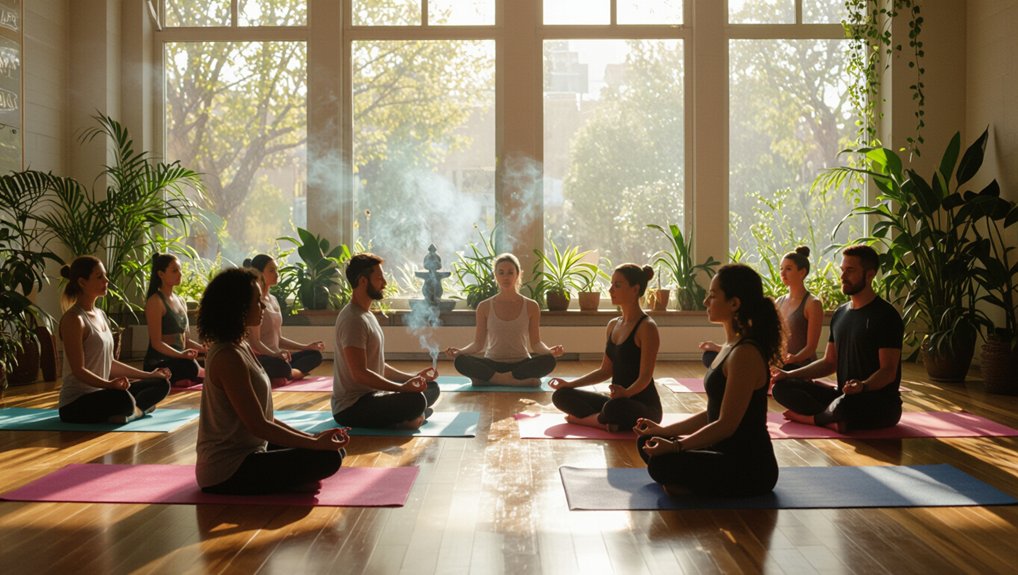
When you engage in mindfulness meditation, you may discover a range of physical health advantages that complement its mental benefits. This practice can significantly reduce stress, which often leads to improved heart health and lower blood pressure.
You might also find that it enhances your immune system, making you less prone to illness. Regular meditation encourages better sleep patterns, allowing your body to recover and rejuvenate effectively.
Additionally, you may experience reduced chronic pain as mindfulness helps you manage discomfort more effectively. By fostering a deeper mind-body connection, mindfulness can promote healthier lifestyle choices, such as improved nutrition and increased physical activity.
How to Get Started With Mindfulness Meditation

Getting started with mindfulness meditation can be simple and rewarding, even if you’re new to the practice.
First, find a quiet space where you won’t be disturbed. Sit comfortably, either on a chair or on the floor, and close your eyes or lower your gaze.
Start by focusing on your breath; notice how it feels as you inhale and exhale. If your mind wanders, gently bring your attention back to your breath without judgment.
Aim to practice for just a few minutes daily, gradually increasing the time as you become more comfortable.
Techniques for Practicing Mindfulness
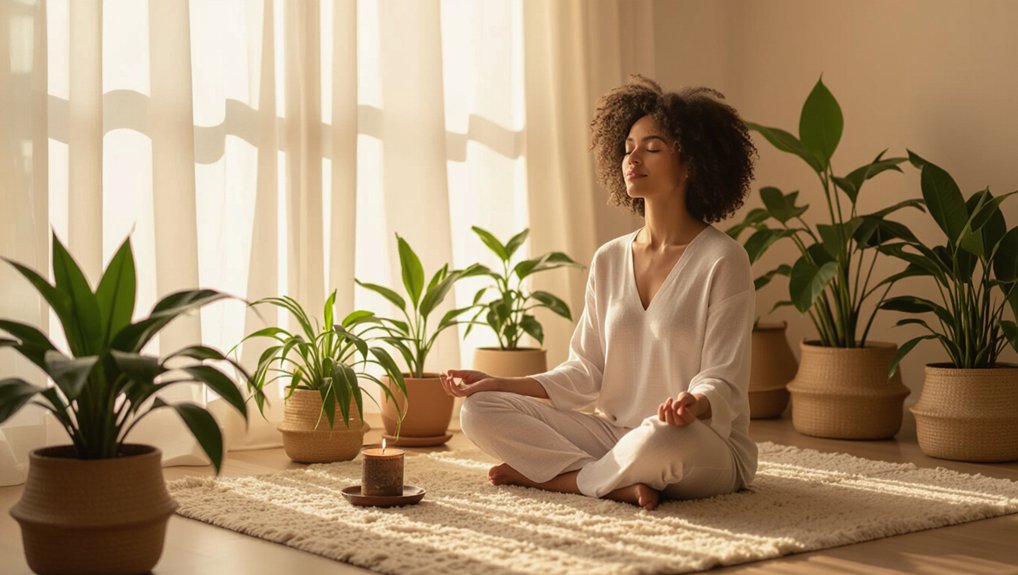
Many find that incorporating specific techniques can enhance their mindfulness practice. One effective method is focusing on your breath. As you inhale and exhale, pay attention to the sensations in your body.
Another technique involves body scanning, where you mentally check in with different parts of your body, noticing any tension or discomfort. You might also try mindful walking; as you stroll, concentrate on each step and the feeling of the ground beneath your feet.
Journaling can be beneficial too—write down your thoughts and feelings to cultivate awareness. Lastly, using guided meditations can provide structure and support, helping you stay engaged.
Experiment with these techniques to discover what resonates with you and deepens your mindfulness experience.
Common Challenges and How to Overcome Them
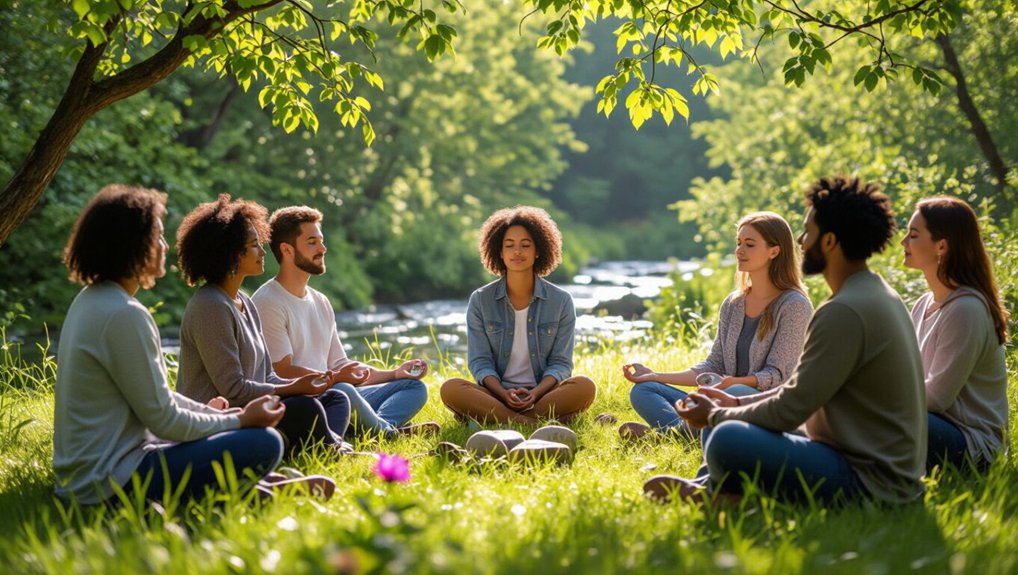
Although mindfulness meditation offers numerous benefits, you might encounter common challenges that can hinder your practice. One frequent obstacle is a wandering mind. When thoughts drift, gently acknowledge them and return your focus to your breath or mantra.
Another challenge is discomfort, whether physical or emotional. If you feel uneasy, adjust your posture or allow yourself to sit with the discomfort, observing it without judgment.
Time constraints can also pose a barrier; try shorter sessions or incorporate mindfulness into daily activities.
Lastly, it’s normal to feel frustration when progress seems slow. Remind yourself that mindfulness is a journey, and consistency is key. Embrace these challenges as opportunities for growth, and be patient with yourself as you develop your practice.
Integrating Mindfulness Into Daily Life
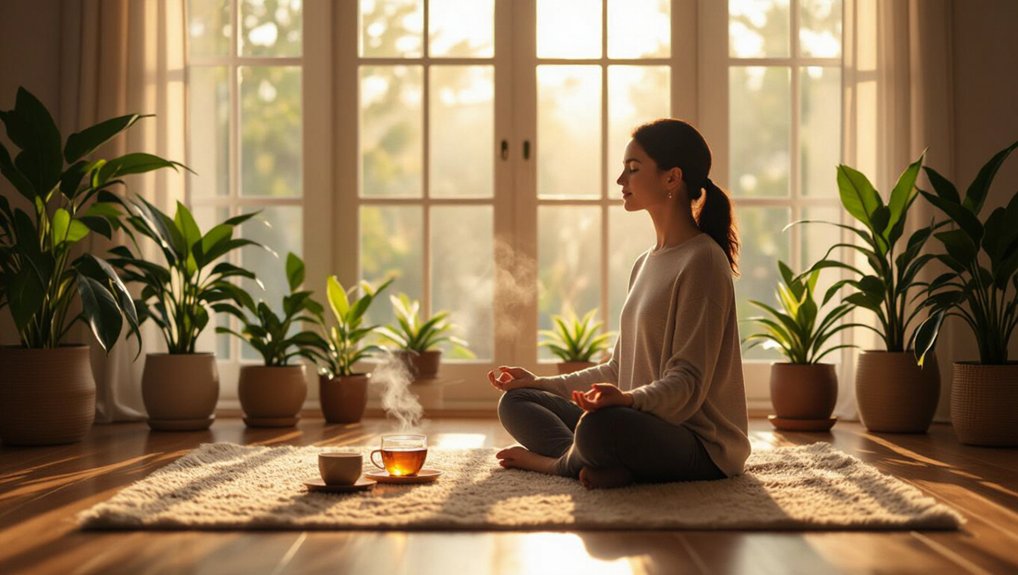
While you might think mindfulness meditation is limited to sitting quietly on a cushion, it can actually be woven into your everyday activities.
You can start by focusing on your breath while brushing your teeth or savoring each bite during meals. Pay attention to the sensations in your body as you walk, feeling the ground beneath your feet.
When you wash dishes, notice the warmth of the water and the texture of the soap. Even during conversations, practice active listening by fully engaging with the other person.
Mindfulness in Different Cultures
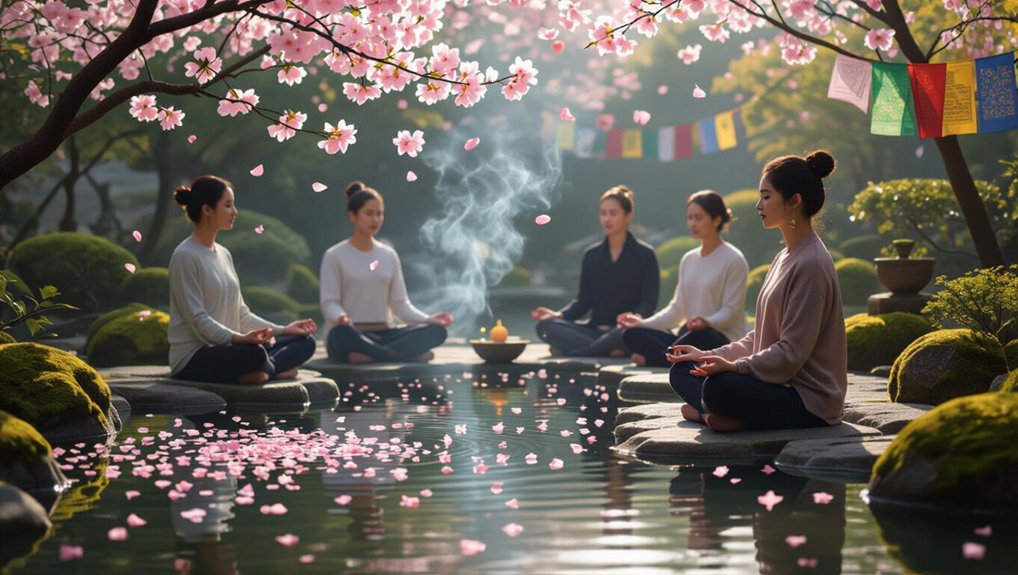
As you explore mindfulness in different cultures, you’ll discover that various traditions have shaped its practice and understanding.
In Buddhism, mindfulness is a core concept, emphasizing awareness and presence to alleviate suffering.
Hinduism incorporates mindfulness through practices like yoga and meditation, fostering a deep connection to the self and the universe.
In indigenous cultures, mindfulness often manifests in rituals that honor nature and community, promoting harmony and balance.
Meanwhile, modern Western practices blend these ancient teachings with contemporary psychological insights, making mindfulness accessible to many.
Each culture offers unique perspectives, enriching your practice and deepening your appreciation for mindfulness.
Resources for Further Exploration
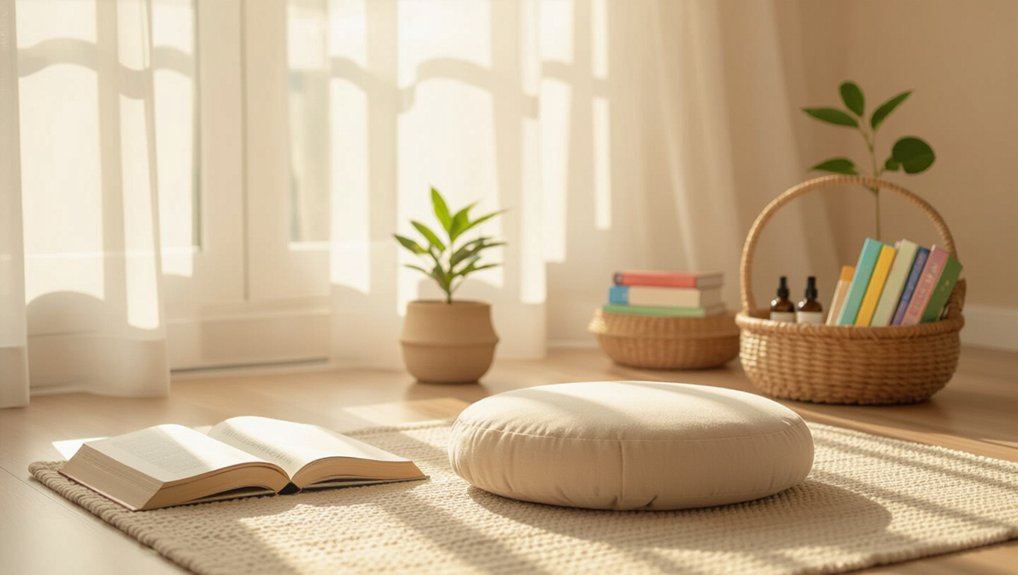
Exploring mindfulness across various cultures opens the door to a wealth of resources that can deepen your understanding and practice.
Books like “The Miracle of Mindfulness” by Thich Nhat Hanh offer practical insights, while Jon Kabat-Zinn’s “Wherever You Go, There You Are” introduces foundational concepts.
Online courses from platforms like Coursera or Insight Timer provide guided meditations and expert teachings.
Podcasts such as “The Mindfulness Meditation Podcast” can enhance your daily practice, and apps like Headspace or Calm offer tailored experiences.
You might also find local meditation centers or workshops in your area, giving you hands-on experience and community support.
Engaging with these resources can significantly enrich your mindfulness journey.
Conclusion
As you embark on your mindfulness meditation journey, remember that each moment is an opportunity for growth and self-discovery. Embrace the techniques you’ve learned and allow them to enhance your daily life. With practice, you’ll find greater calm and clarity amidst life’s challenges. Don’t hesitate to explore further resources and connect with others on this path. Mindfulness isn’t just a practice; it’s a way of living that can transform your mental and physical well-being.
